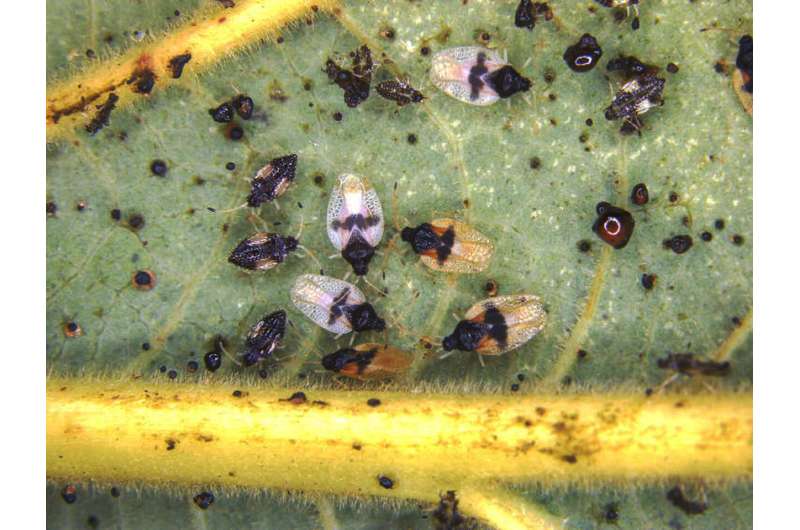'In this undated photo released by the Hawaii Department of Agriculture shows adults and nymphs of the Avocado Lace Bug, (Pseudacysta perseae). The avocado lace bug was first discovered in Pearl City, Oahu, in Dec. 2019 and was subsequently identified on Hawaii Island and Maui, the state Department of Agriculture said. Department officials have not confirmed the presence of the bug on Kauai. The infested Maui plants located Thursday, Feb. 13 2020 in retail outlets, were destroyed or treated, department officials said.(Hawaii Department of Agriculture via AP)
An invasive bug was discovered feeding on avocado leaves across the state of Hawaii and was most recently found on Maui plants in retail outlets, entomologists said.
The avocado lace bug was first discovered in Pearl City, Oahu, in December and was subsequently identified on Hawaii Island and Maui, the state Department of Agriculture said. Department officials have not confirmed the presence of the bug on Kauai.
The infested Maui plants located Thursday in retail outlets, were destroyed or treated, department officials said.
It is unclear how the bug was introduced in Hawaii.
Department experts collaborated with the University of Hawaii College of Tropical Agriculture and Human Resources—Cooperative Extension Service to identify the pest.
The lace bug feeds on the leaves of avocado plants extracting nutrients and gradually destroying the plants, experts said. The bug does not feed on the fruit itself.
The bug causes green to yellowish blotches on the leaves and damaged leaves become dry, may curl, drop prematurely and may cause reduction in fruit yields.
The lace bug, scientifically known as pseudacysta perseae, is also known to feed on red bay plants and camphor trees on the Mainland. The bug can also be found in the Caribbean, Central and South America and Portugal.
Adult avocado lace bugs have black heads and mostly black bodies with a black stripe across the width of their lacy wings, and immature bugs can range in color from red to dark brown to black.
Possible infestations should be reported to Agriculture Department's Plant Pest Control Branch.
© 2020 The Associated Press. All rights reserved.
























